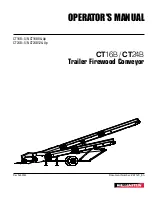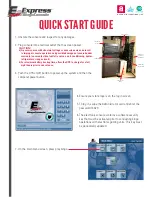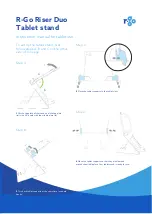
2.4 Safety Rules
•
Anyone who is going to use this
machine must read and understand
all safety and operating instructions
beforehand.
•
Always wear appropriate Personal Protective Equipment
(PPE). This equipment includes but is not limited to:
-
A hard hat
-
Heavy gloves
-
Hearing protection
-
Protective shoes with slip resistant soles
-
Protective glasses, goggles, or face shield
•
Read and understand ALL Safety and Operating instructions
in the manual and follow them. Most accidents can
be avoided. The most important safety device on this
equipment is a SAFE operator.
•
Be sure you understand all safety signs located on the
machine before using, maintaining, adjusting, or cleaning.
•
Inspect and secure all guards before starting.
•
Place the machine in a Safe Condition before performing
any service, maintenance work, storage preparation, or
hooking up.
Placing the machine in a Safe Condition involves performing
the following:
SAFE CONDITION
1.
Unload the conveyor.
2.
Shut off the engine. Disconnect spark plug leads.
Disconnect negative (-) battery cable from battery.
3.
Lower the conveyor fully until it is resting on the stops.
•
Have a first-aid kit available for use
should the need arise.
•
Always keep a fire extinguisher available for use
should the need arise and know how to use it.
•
Check the machine is clear of debris prior to starting the
engine.
•
Review safety related items annually with all personnel who
will be operating or performing maintenance.
•
Do not
expect a person who does not understand operation
and safety instructions to use the machine. Untrained
operators are not qualified and can create risks of serious
injury or death. It is the machine owner’s responsibility to
make sure every operator is fully trained.
•
Do not modify the equipment in any way. Unauthorized
modification may impair function or safety, could affect the
life of the equipment, and can void warranty.
•
Never allow riders during transport.
•
Do not risk injury or death by ignoring good safety
practices.
• Think SAFETY! Work SAFELY!
2.4.1 Safety Training
•
Safety is a primary concern in the design and manufacture
of Wallenstein products. Unfortunately, our efforts to
provide safe equipment can be wiped out by a single
careless act.
•
The best safety feature is an informed,
careful operator—we ask you to
be that kind of an operator. It is the
operator's responsibility to read,
understand and follow ALL safety and
operation instructions in the manual.
Accidents can be avoided.
•
Do not allow anyone to use this machine until they have
read this manual. Operator's must have a thorough
understanding of the safety precautions and of how the
machine works. Review the safety instructions with all
users annually.
2.5 Operating Safety
It is important that you read and pay attention to the safety signs
on the machine. Clean or replace all safety signs if they cannot
be clearly read and understood. They are there for your safety,
as well as the safety of others.
Safety
CT16B / CT24B
Trailer Firewood Conveyor
Safety
8
Summary of Contents for CT16B
Page 47: ......
Page 48: ...www wallensteinequipment com...









































